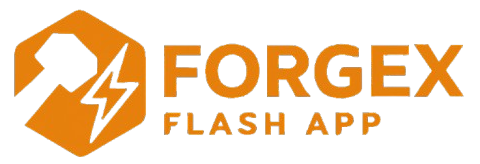In the world of blockchain development and education, testing transaction flows without using live networks is essential. Flash software for crypto transactions offers a secure, fast, and flexible way to simulate the sending and receiving of cryptocurrencies like Bitcoin (BTC) and Tether (USDT) without requiring real tokens or blockchain confirmations.
This blog post explains how flash software works, who uses it, and why it’s a critical tool for crypto development and training environments.
What Is Flash Crypto Software?
Flash crypto software is a transaction simulator that generates the appearance of cryptocurrency transfers without actually interacting with any blockchain. These tools allow developers and educators to mimic token movements across wallets and applications in real time, using fake data for addresses, transaction hashes, amounts, and timestamps.
The software supports various crypto assets, most commonly:
- Bitcoin (BTC)
- Tether (USDT) on ERC-20 and TRC-20
- Other supported testable tokens
No real value is transferred, and no mining fees or confirmations are involved.
Why Use Flash Software for Crypto Testing?
1. Development and Debugging
Test crypto transaction logic during wallet or app development without requiring access to mainnet or testnet assets.
2. UI and UX Testing
Evaluate how wallet interfaces respond to different transaction statuses—pending, confirmed, or failed—using controlled simulations.
3. Product Demonstration
Showcase your crypto platform’s features in real time with mock transactions during presentations or sales demos.
4. Blockchain Training and Education
Educators use flash tools to help students learn crypto workflows visually without risk or complexity.
Key Features
- Simulate BTC, USDT, and other token transfers
- No blockchain access or internet required
- Custom input for transaction values, addresses, and status
- Real-time appearance in test wallets or UIs
- Compatible with desktop and web-based apps
- Safe for use in sandbox and staging environments
Who Should Use This Software?
- Blockchain developers building or refining wallets and crypto apps
- Quality assurance teams automating tests and verifying transaction flow
- Crypto educators offering hands-on learning experiences
- UI/UX designers prototyping transaction behavior and notifications
- Startup teams preparing investor or product demonstrations
Advantages of Flash Software for Crypto Simulation
- Speeds up product development
- Removes the need for real or testnet tokens
- Eliminates risk of accidental fund transfer
- Enhances training through hands-on simulation
- Improves demo quality without external dependencies
Responsible and Ethical Use
Flash software must be used only for development, testing, and education. It must never be used to mislead users, simulate real balances in production apps, or promote fraudulent activity.
Use in:
- Closed environments
- Demo systems
- Training labs
- Non-production interfaces
Disclose clearly when a transaction is simulated to maintain transparency and trust.
Conclusion
If you’re working in blockchain development, UI testing, or crypto training, the ability to test crypto transactions with flash software is a must-have. These tools let you simulate token transfers instantly, safely, and without any risk—helping you build, test, and teach faster.
By integrating flash software into your workflow, you ensure that your crypto apps are more reliable, user-friendly, and presentation-ready—without ever touching real assets.


